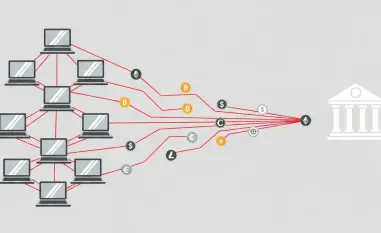In a sophisticated cyber espionage operation, the Lazarus Advanced Persistent Threat (APT) group, linked to North Korea, has effectively exploited a zero-day vulnerability in the Google Chrome browser to execute a meticulously planned cyberattack. This operation, first detected on May 13, 2024, leveraged a deceptive cryptocurrency-themed game to target unsuspecting users. The group employed a complex blend of technical exploits and advanced social engineering tactics, marking them as a formidable entity in the cyber threat landscape. The attack was initially discovered by Kaspersky on a personal computer in Russia through a fraudulent website, detankzone[.]com, which posed as a legitimate game product page. Scripts embedded in this website exploited vulnerabilities in Chrome, enabling the group to execute arbitrary code on victims’ machines.
Exploiting Zero-Day Vulnerabilities
Lazarus APT’s strategy revolved around exploiting two critical vulnerabilities in the Chrome browser. One vulnerability allowed memory read/write within Chrome, giving the attackers unfettered access to the system’s memory and paving the way for further exploitation. The second vulnerability bypassed Chrome’s V8 sandbox security feature, a crucial defense mechanism that isolates processes to prevent malicious code from spreading. The dual exploitation of these vulnerabilities enabled attackers to gain control over victims’ systems, executing arbitrary code and potentially leading to severe consequences, including data theft and system compromise.
Upon detecting the exploit, Kaspersky acted swiftly to report the issue to Google. Within two days, Google released an update for Chrome, patching the vulnerabilities. The update, documented under CVE-2024-4947, was included in Chrome version 125.0.6422.60. In addition to fixing the vulnerabilities, Google blocked access to detankzone[.]com and other related malicious sites, effectively curbing the immediate threat posed by this campaign. This rapid response showcases the critical importance of timely vulnerability patching and highlights the collaborative efforts required between cybersecurity firms and technology providers to combat sophisticated cyber threats.
Social Engineering Tactics
Lazarus Group’s campaign wasn’t just about exploiting technical vulnerabilities; they effectively used advanced social engineering tactics to make their attacks more effective. By creating a fake decentralized finance (DeFi) NFT-based multiplayer online battle arena (MOBA) tank game, they added a layer of authenticity to their scam. This game looked convincing, as it borrowed elements from an existing game called DeFiTankLand (DFTL), including its source code, which Lazarus had illegally acquired. This made their deception much more believable, complicating the detection of the scam.
What set this campaign apart was its strategic blend of technical acumen and psychological manipulation. The crafted game not only mimicked the appearance and functionality of a genuine product but also targeted a niche market already familiar with DeFi and NFT concepts. This meticulous approach ensured that the fake game could pass initial scrutiny from even seasoned users, making it easier for the group to compromise sensitive information and deploy malware. Combining technical skills with elaborate social engineering made this campaign particularly formidable.













